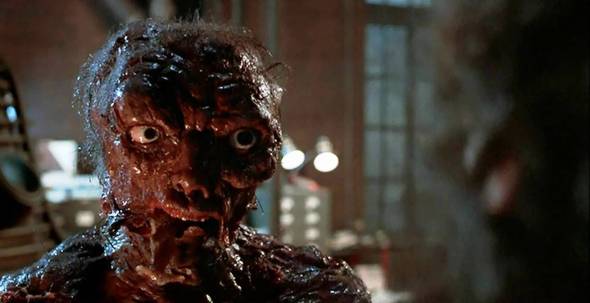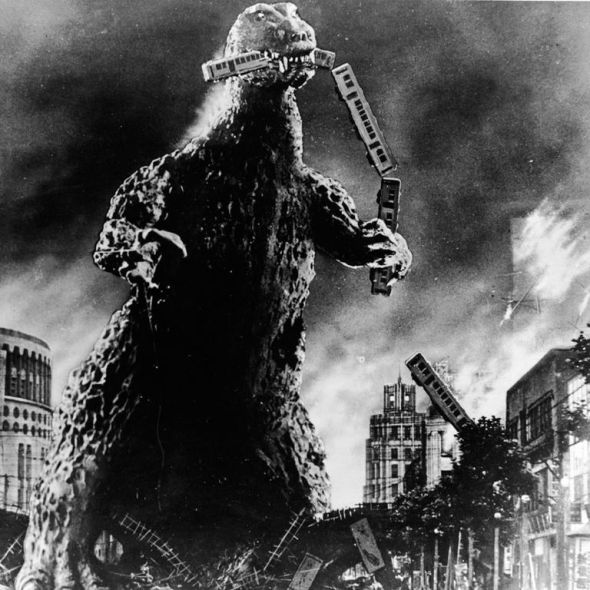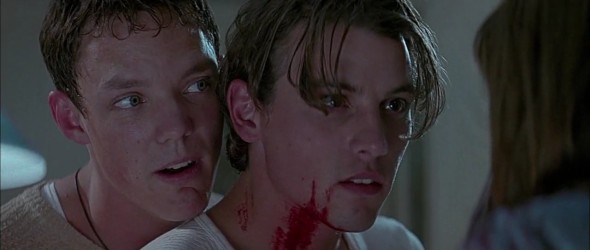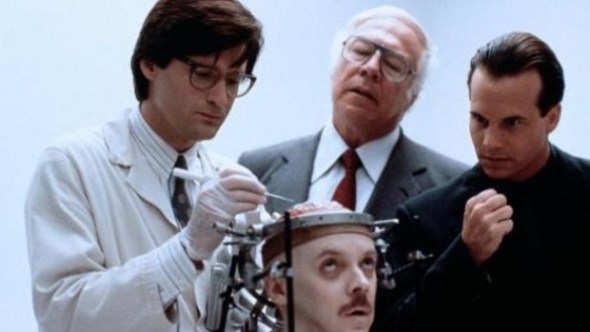TOP 13 HORROR SUB-GENRES (Part 2 of 3)
I recently read a piece about how certain sub-genres of horror seem to correlate with similar strata of metal music; death metal matching splatter horror, power metal comparing to action horror, etc.
As a fan, such classifications help me find the kind of horror film for which I’m in the mood, while as a writer, it helps to have some point of reference with which to promote my work — though, in the interests of being all “punk rock” and whatnot, I pay lip service to the notion of defying pigeonholery, and to seeking films and books that do the same.
Thus, I’ve attempted to compile an overview of horror’s various niches, with some illustrative examples. Almost every horror film is a crossover to some degree, of course, which is why the horror universe keeps expanding.
 BODY HORROR
BODY HORROR
Robert Louis Stevenson’s The Strange Case of Dr. Jekyll and Mr. Hyde might well be the first fictional take on body horror, a sub-genre based on the concept of one’s physical person being changed or violated. It surely is the most personal and accessible form of horror, given that it stems from the loss of control that accompanies birth, adolescence, aging and death; all radical changes happening to us, over which we exert little control. Add disease and injury, and the idea that we have any individual sovereignty seems almost ridiculous.
In THE FLY, especially the Cronenberg remake, we see bodily changes that might be regarded as improvements — until we realize that these come at the price of humanity. Also true of many film versions of the werewolf legend, which more closely resemble Stevenson’s aforementioned classic than their original folklore — except that poor Larry Talbot and cousins had no choice in undergoing their transformations.
Citing Cronenberg again, eXistenZ puts the viewer inside a game that is more organic than technological. To play, one has to merge with the game itself. VR seems relatively obsolete doesn’t it? In an industry that values immersive experience, might it be possible to be changed beyond return?
Other examples include Body Melt, Cabin Fever, Clown, Horns, and Thinner.
 CREATURE FEATURE
CREATURE FEATURE
Pretty well self explanatory, though there are a couple of crucial parameters. It’s all about the monsters, and best left at that. Character development is not the main attraction in a creature feature, and given SyFy’s long list of formulaic CGI monster-of-the-week Saturday slot-fillers, not even particularly welcome Don’t get me wrong; there are great creature features with wonderfully-drawn principals. It’s just not the current norm. Most Japanese kaiju and 50s-era radioactive mutant movies qualify — “mutant” being a key word. Jaws, Anaconda, being real-life horrors of nature, fall into our next category.

NATURE RUN AMUCK
When the giant ants and lizards of the 50s shrunk back down to their God-ordered proportions in the 70s, the Nature Run Amuck subgenre was born. Instead of just doing what they do, only as giants, post-hippie era critters are usually more intelligent, populous, and/or aggressive, made unmanageable by an unprepared but generally deserving mankind. Phase IV pits a crew of scientists against a colony of ants. Swarm plays on the 70s fear of “killer bees” migrating from Brazil. “Link” sees research apes turning the tables on their human keepers. In “Frogs,” it’s a lot more than the titular amphibians who upset the balance, and of course, every natural disaster is made worse by combining it with sharks or spiders.
 HORROR COMEDY
HORROR COMEDY
Call me a curmudgeon. I just don’t see the point. Do you want to scream or do you want to laugh? Some of the best horror flicks contain moments of brilliant black humor that serve to break tension at crucial points. A horror comedy takes the thing that you focus your fears on and makes it a joke. Everything deserves to be parodied at some point — but is it asking too much for a little subtlety. SCREAM for instance, or POPCORN. But the SCARY MOVIE treatment is unnecessarily heavyhanded.
 MINDFUCK
MINDFUCK
In the Charles Beaumont-scripted BRAINDEAD from 1990, Bill Paxton is leaving work, carrying a long a brain in a jar, hoping to catch up on his research at home. There’s a tussle with a hobo, and the jar, brain and all, shatters on the sidewalk. It’s a good metaphor for what this subcategory aims for. (As an aside, it’s also a damn sight more hilarious than any of the SCARY MOVIE films, near as I can estimate.) The plot often involves following a protagonist as he or she seemingly descends into madness — or is led to believe they are. It lends itself to creative special effects sequences, as well as unexpected story twists, as it is not necessarily constrained by conventional plot structure. It’s also a fairly loose designation that could encompass films as different from each other as ALTERED STATES, VANILLA SKY, TOTAL RECALL, TETSUO: THE IRON MAN, and PHANTASM.
Come back next week for FOLK HORROR and more.

Pingback: TOP 13 HORROR SUB-GENRES (Part 3 of 3) | Patrick C. Greene